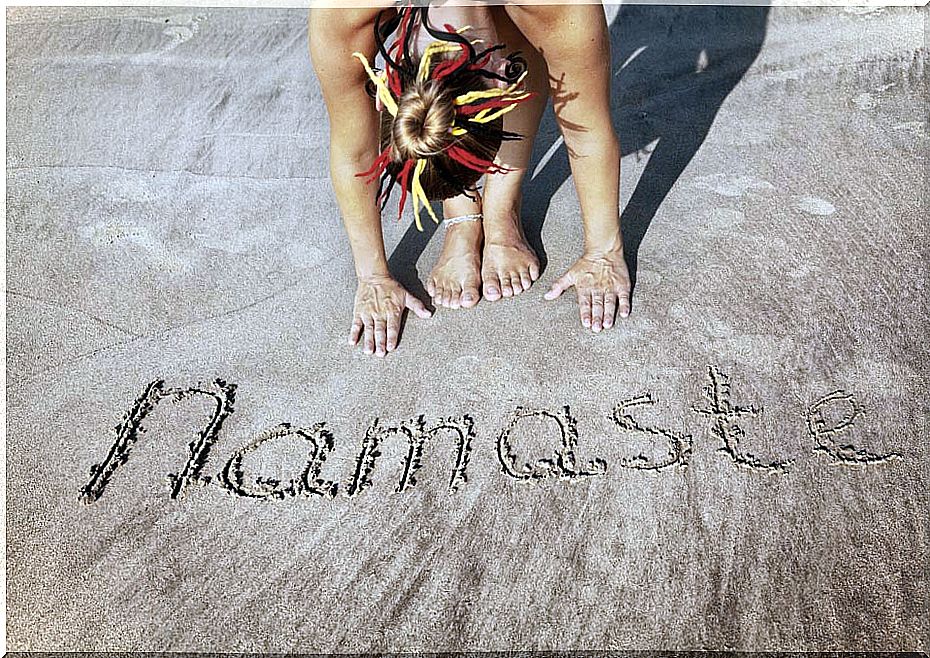“Namasté”: What Is Its Meaning?
If you have ever entered the fantastic world of meditation, surely you have been in contact with the word “namaste”.
This term so used in meditation, and also in some disciplines of yoga, has a very deep and spiritual meaning. Therefore, it is necessary to know it, so that when we pronounce this word we are aware of what we are actually saying.
The origin of the word “namaste”

“Namaste” is a fairly unknown term, although it arose in very distant lands as a form of greeting and, also, of farewell. Its Hindu origin and corresponds to the Sanskrit language. This is one of the languages considered sacred in the Hindu religion.
The word is used accompanied by a mudra, some particular gestures used in meditation. Thus, when pronouncing “namaste” the palms of the hands are brought together in front of the chest. Its meaning is a sign of absolute respect towards the interlocutor who is greeted or dismissed.
This is nothing strange. Etymologically, namas is a noun that can be translated as “greeting” or “reverence”; on the other hand, te is a pronoun that means “to you.”
Spirituality in meditation and yoga
Meditation and yoga are practices that provide many benefits for the person who practices them. With them, special emphasis is placed on being aware of the present moment, freeing yourself from judgments, worries and other issues that disturb the mind. Thus, we can reach a state of connection with everything, one where the ego dissolves.
In yoga and meditation, “namaste” is used as a way of expressing humility. This is done not only before any possible interlocutor, but towards the world, towards the universe …
There are some experts who have dedicated themselves to the study of the word “namaste”. The conclusions they have reached is that “namas” —which we had previously seen means greeting or reverence— can also symbolize “nothing of me”.
That state in which we are nobody and at the same time we are everything, in which we are connected to the world, but the ego is appeased. The mind is calm, we are calm, almost in a trance state.
Our divine essence

According to the tradition in which the term “namaste” has arisen, it is believed that a divine essence resides in us. Sometimes, we must get in touch with her, thanks to these healthy practices that we have already talked about.
The moment we are in that ideal state, alert and calm at the same time, we clasp our hands, lean forward and pronounce the word “namaste.” In this way, we give presence to the divine essence that resides in us. We also do it with others and with what surrounds us.
It can be something similar to when people who are practitioners of the Catholic religion kneel and cross themselves as a sign of humility and respect towards God. In this case, the word “namaste” can be directed towards God, towards the universe or towards another person. However, it is not only a sign of respect for the other, but also for ourselves.
We are two divine essences who recognize each other and greet each other with respect.
Conclusion and practice
Now you are aware of what it means to pronounce this word, so you can internalize everything it has to contribute. From now on, you can incorporate it into your yoga or meditation sessions to fill yourself with well-being every time you pronounce it.
Currently, more and more people are benefiting from all the good things in dedicating a few minutes each day to these practices. Thus, in this way, we bring a bit of calm and tranquility to this noisy world full of obligations in which we and ourselves have had to live.
Consistency in practice and knowing exactly what this meaningful word means will allow you to get the most out of all the yoga and meditation sessions you do from now on.









